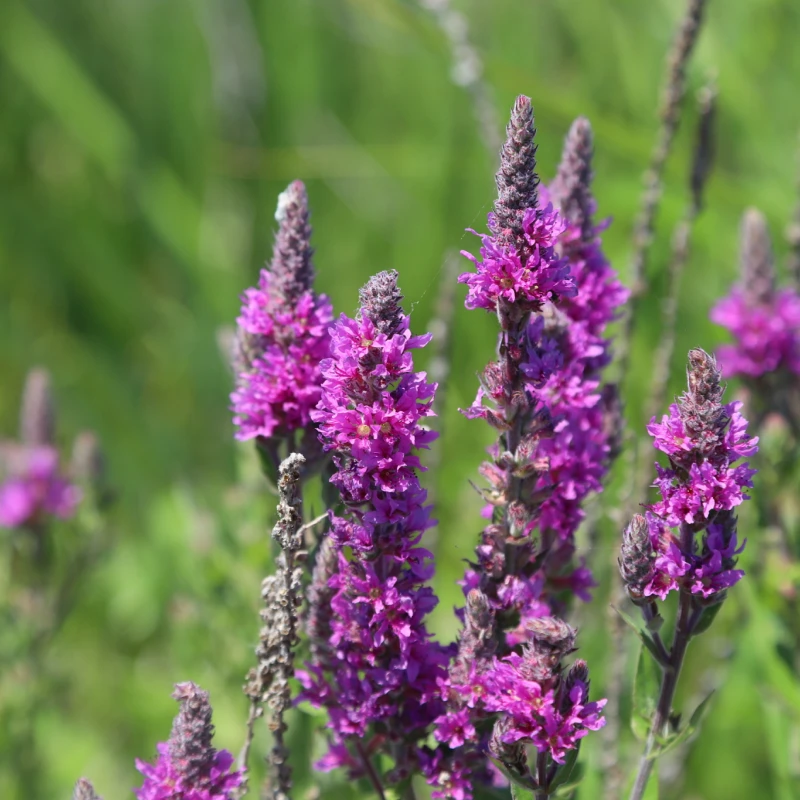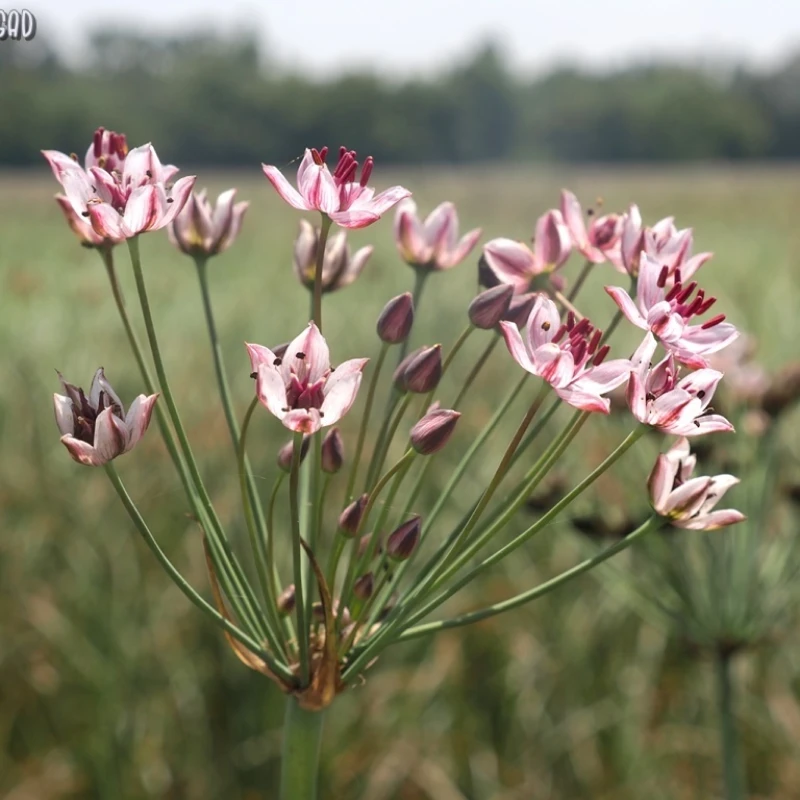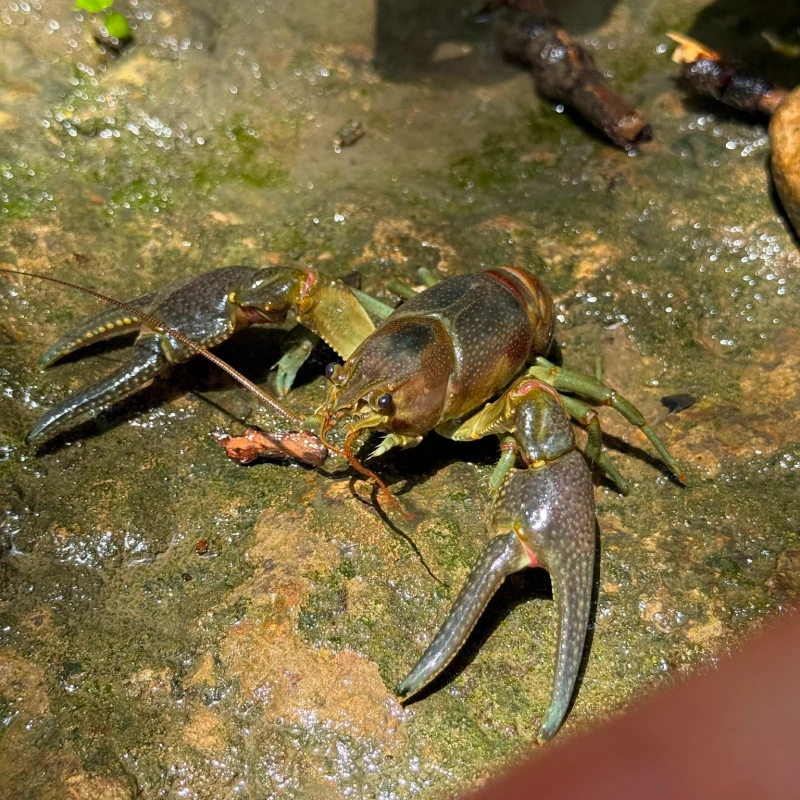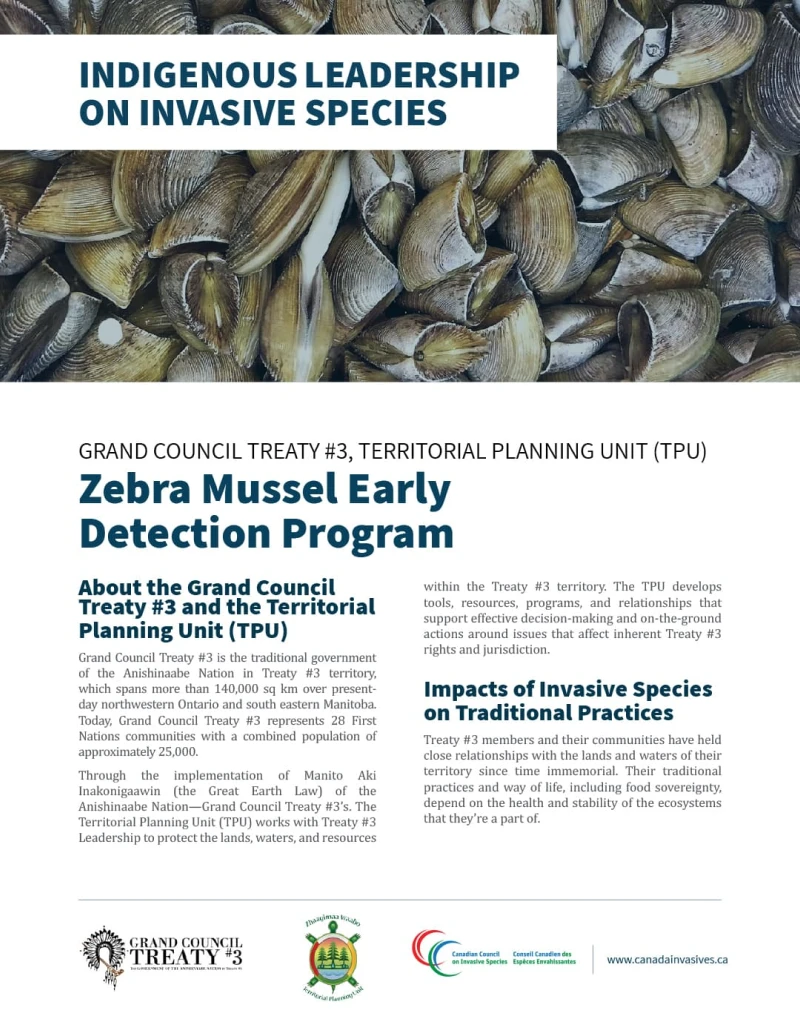About the Grand Council Treaty #3 and the Territorial Planning Unit (TPU)
Grand Council Treaty #3 serves as the traditional government of the Anishinaabe Nation within Treaty #3 territory, which spans more than 140,000 square kilometers across present-day northwestern Ontario and southeastern Manitoba. Today, it represents 28 First Nations communities with a combined population of approximately 25,000 people.
Through the implementation of Manito Aki Inakonigaawin (the Great Earth Law) of the Anishinaabe Nation, the Territorial Planning Unit (TPU) works with Treaty #3 Leadership to protect lands, waters, and resources within the territory. The TPU develops tools, resources, programs, and partnerships to support effective decision-making and on-the-ground action on issues affecting inherent Treaty #3 rights and jurisdiction.
Impacts of Invasive Species on Traditional Practices
Treaty #3 members have maintained deep connections with their lands and waters since time immemorial. Their traditional practices and way of life, including food sovereignty, depend on the health and stability of local ecosystems.
In 2018, invasive zebra mussel (Dreissena polymorpha) larvae were detected in two lakes within Treaty #3 territory—Lake of the Woods and Shoal Lake. While established adult populations have not yet been found, there is growing concern that zebra mussels, and other established invasive species, may further degrade Treaty #3’s waterways. These species include:

© Rishona Vemulapalli via iNaturalist.org, used under CC BY-NC

© Yael Orgad via iNaturalist.org, used under CC

© calliopelover via iNaturalist.org
These invasive species, along with fluctuating water levels, are contributing to the decline of culturally significant native species such as wild rice and walleye, both of which are central to Anishinaabe food systems and traditions.
How the Program Works
Using a $1,000 microgrant to purchase materials, the TPU:
In 2021, the TPU distributed 32 zebra mussel settlement samplers. By 2022, the goal was to expand the program to place at least one sampler in each Treaty #3 community.
Through early detection efforts and community-based environmental monitoring workshops, the TPU aims to mitigate zebra mussel impacts before they become widespread.
Indigenous Leadership on Invasive Species
On behalf of the Canadian Council on Invasive Species (CCIS), Advocate Strategies collaborated with Indigenous communities and organizations to develop a series of spotlights on Indigenous-led invasive species initiatives. These case studies aim to inspire future projects and promote collaborative action in addressing invasive species challenges.
Learn More About the Grand Council Treaty #3’s Territorial Planning Unit (TPU)

